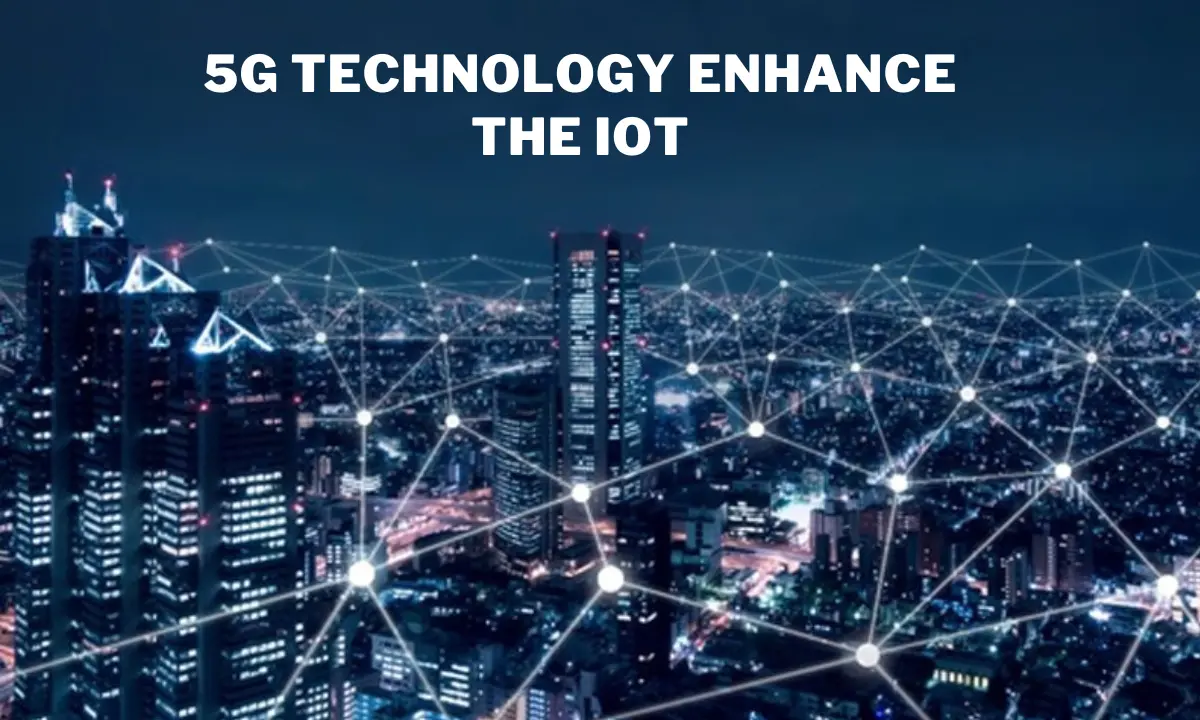5g technology enhance the IoT: The Internet of Things (IoT) is a significant advancement in a world where technological innovation is becoming more and more prevalent. From driverless cars to smart thermostats, it’s a network of linked gadgets that talk to each other and share data to make our lives easier. However, the fifth-generation cellular technology, or 5G, is what really puts the Internet of Things on an exciting trajectory.
How does 5g technology enhance the IoT
In the grand tapestry of technological advancement, the fusion of 5G and IoT stands out as a dazzling masterpiece. It’s a symphony of speed, connectivity, and innovation that’s reshaping the way we live, work, and play. Picture a world where everything around you is seamlessly interconnected, from your coffee maker to your car, creating an ecosystem of convenience and efficiency. Welcome to the era of 5G-enhanced IoT.
The 5G Revolution: Speed Beyond Imagination
Let’s first examine the incredible speed and power of this next-generation wireless network before delving into how 5G technology improves the Internet of Things. Imagine having an immersive augmented reality experience or downloading a high quality movie in a matter of seconds, all without any lag. For those who don’t know 5G stands for fifth generation wireless technology, which is 100 times quicker than 4G.
5G’s Magic Wand for IoT
Now, let’s explore how 5G weaves its magic into the IoT fabric:
Lightning-Fast Connectivity:
5G’s speed and low latency provide IoT devices with instant connectivity. Imagine your smart home security camera detecting an intruder and sending you a real-time alert in the blink of an eye. That’s the power of 5G.
Ubiquitous Coverage:
5G networks boast wider coverage areas than previous generations. Remote and rural areas can now enjoy the benefits of IoT, enabling farmers to monitor crops and livestock more effectively or improving emergency response in remote locations.
Massive Device Connectivity:
The scalability of 5G is breathtaking. It can support a massive number of IoT devices simultaneously. Whether it’s a bustling smart city or a sprawling industrial complex, 5G ensures that all devices stay connected, enabling efficient data exchange.
Enhanced Reliability:
With ultra-low latency and high reliability, 5G ensures that critical applications, such as autonomous vehicles and healthcare devices, operate seamlessly. A delay of a few milliseconds can be a matter of life and death, and 5G’s reliability can be a game-changer in such scenarios.
IoT Evolution:
5G doesn’t just enhance existing IoT applications. It fuels the birth of new ones. Think about self-driving cars communicating with each other to optimize traffic flow or factories operating autonomously with IoT-enabled machines.
Energy Efficiency:
5G technology is designed to be energy-efficient, which is crucial for battery-powered IoT devices. This means longer-lasting smartwatches, eco-friendly sensors, and sustainable IoT solutions.
Real-World Applications
The impact of 5G on IoT is already visible in various sectors:
Healthcare:
Remote patient monitoring devices are becoming more accurate and responsive, improving patient care and reducing healthcare costs.
Smart Cities:
5G-enabled IoT is transforming cities into smart, efficient hubs with intelligent traffic management, waste disposal, and energy consumption.
Agriculture:
Farmers can monitor and control irrigation systems, track livestock, and manage crops with precision, resulting in increased yields and reduced resource wastage.
Manufacturing:
Smart factories powered by 5G IoT are enhancing production efficiency, reducing downtime, and enabling predictive maintenance.
FAQs
What is 5G, and how does it differ from previous wireless technologies?
5G is the fifth generation of wireless technology, offering significantly faster data speeds, lower latency and the ability to connect a massive number of devices simultaneously. Unlike its predecessors, 5G is designed to meet the demands of emerging technologies, including IoT applications.
How does 5G enhance the IoT’s real-time connectivity?
5G’s ultra-low latency allows IoT devices to communicate with each other and central servers in near real-time. This enables applications like remote surgery, autonomous vehicles, and augmented reality to function seamlessly and safely.
What industries are benefiting the most from the integration of 5G and IoT?
Numerous industries are experiencing transformation due to 5G-enabled IoT, including healthcare (telemedicine and remote patient monitoring), agriculture (smart farming), manufacturing (smart factories), and transportation (autonomous vehicles and smart logistics).
Is 5G technology secure for IoT applications?
Yes, 5G incorporates advanced security features like network slicing, enhanced encryption, and better authentication protocols. These measures make it more secure for IoT applications, ensuring data privacy and protection against cyber threats.
What are the challenges associated with implementing 5G technology in IoT systems?
Implementing 5G in IoT systems can be challenging due to the need for extensive infrastructure upgrades, including the deployment of more base stations and fiber-optic networks. Regulatory and spectrum allocation issues also pose obstacles, but ongoing advancements aim to address these challenges for a seamless IoT experience.
Conclusion
As we wrap up this journey through the intersection of 5G and the Internet of Things, it’s clear that we are on the cusp of a technological renaissance. 5G technology enhances the IoT in ways that seemed unimaginable a decade ago and the future promises even more exciting developments.
So, whether you are an industry professional, a tech enthusiast or just someone curious about the future, it’s time to embrace the boundless potential of the IoT powered by 5G. Together, they are forging a smarter, more connected world where possibilities are limited only by our imagination.

